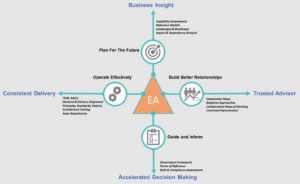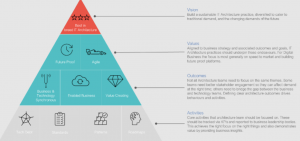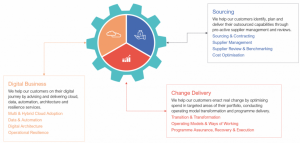Table of Contents
Almost every business in this day in age uses IT to a certain extent to operate their business. IT is such a vital asset for every business and can be used in so many ways to maximise an organisation’s productivity, which facilitates an organisation’s growth and leveraged profit. For IT assets to be considered efficient, it is clear to understand that efficient means different things to different organisations. One business might see efficiency as profit-based, whereas another company might measure its efficiency against how effective its products and services are.
What are architectural guidelines?

Architectural guidelines are systems of best practice that relate to an organisation’s IT infrastructure and how sufficient it is to the company and the business’s overall goals.
As you can imagine, this will differ across different business areas as the needs and goals of the company will be inherently different across various sectors. Still, it is essential to have and ensure sure that the equipment and systems you are using are fully suited to your business goals. IT architecture refers to 2 main areas of IT, one physical and digital assets and one area relating solely to policies and procedures that govern the use and protection of those assets.
To build a great set of architectural guidelines to increase efficiency across your business is to take control of your business needs and productivity. It may be necessary to approach some IT architecture consulting experts for the best advice and ways to implement the said infrastructure. So what are five ways you can implement to build efficient internal IT systems to ensure your business stays ahead of the race?
IT inter-communication
Businesses these days can be spread over many parts of the world. Still, each locality that houses equipment and employees should have an internal communication system that increases the efficiency of the locality of that small business. You can also apply effective communication processes to other locations where the inter-communications of IT may fall in line with remotely accessible information hubs, portals, or clouds, so everyone can access the same information without travelling or visiting the hard-wired office.
Implement Uniformed Security Procedures
Implementing a set of uniform security systems allows for less chance of a data breach, both internally and externally. There are many ways that guidelines can assist in scaling the efficiency of a business when it comes to internal IT security. Most of those guidelines will state that there should be a multi-faceted approach to accessing company data. Specific and designated access restrictions mean that internal IT infrastructure is safe from attack and theft in most cases, and only those who are authorised to access the data can do so.
Ensure You Can Expand Your IT
Every business that uses IT solutions should always look for ways to improve and scale their IT solutions in line with expected growth. Internal IT Infrastructure needs to have the ability to be efficient at the time of use, but also have the capabilities to seamlessly expand in line with business growth to make sure that any growth actions that happen with the business can be accommodated without disruption to the efficiency of the company as a whole.
Flexibility is vital when it comes to an initial build of internal IT architecture. While IT systems may be made in a bespoke and suitable way initially, businesses will, if successful, grow over time, sometimes in a very short space of time, and the IT infrastructure needs to be able to accommodate that with the least disruption to productivity possible.
Choose The Right IT Infrastructure For Your Business

What appears to be the best Internal IT Infrastructure system may not be the one that is suited for your business. It is always best practice to adopt some expert advice on which internal system may be best suited for your line of business. The main concern you are looking out for is a system that runs internally as smoothly as possible and encompasses everything you need to operate your organisation flawlessly. It doesn’t need bells and whistles unless your business will benefit from those bells and whistles. It needs to be fast, efficient, accessible, and relevant.
Plan For The Future

Future planning has already been alluded to in previous entries and is a top concern when it comes to the efficiency of your internal IT infrastructure; what is relevant the day it goes live may not be suitable as your organisation scales in years to come.
Planning for the future can be tricky as there are no guarantees with business, but what will help you immensely in your future planning will be the results and predictions made by previous years growth and expansion, so you can make some intelligent predictions as to what might be needed in the future.
Implementing future-proof IT infrastructure may seem a little pointless in the beginning when you need what your business requires now, but can you just imagine the productivity disruption if your Internal systems become outdated versus business needs and need to be replaced in their entirety?
Conclusion
Overall, your business’ IT infrastructure needs to be:
- Safe from harm
- Reliable for your business
- Relevant to your organisation
- Accessible by authorised personal equally
- Future-proofed
- Maintained Fully
And the overall concept of IT Management systems and efficient internal IT infrastructure is to make sure that your business can operate its productivity without disruption. Having a professional set of architectural guidelines in relation to your internal IT systems makes sure that everything mentioned here, and more besides, is addressed and implemented in such a way that allows the organisation to almost let the IT take care of itself and regain focus on the elements of the business that will enable it to grow and be perfectly efficient without disruption or distraction.


